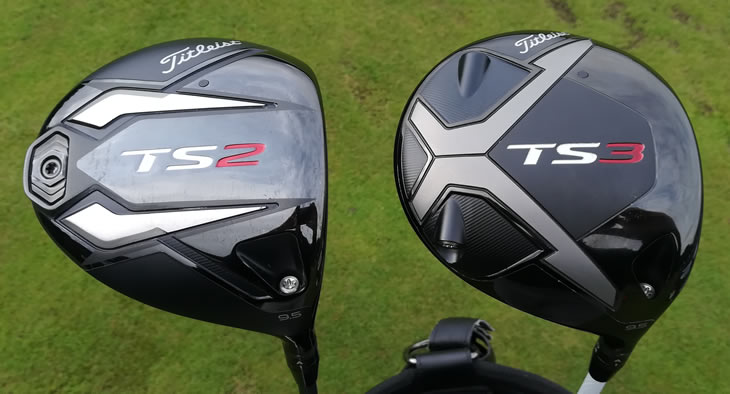ALL WISHON 919THI DRIVER MODELS HAVE BENDABLE HOSELS
Through Hand Select and Bending Service, these driver heads can be ordered in
any loft from 8* to 16* in half degree increments
any lie angle from 4* upright to 4* flat of the 59* lie design spec.
Drivers & Software Updates Search. Do you have the latest drivers for your device? Our engineering team is constantly adding, updating and improving our drivers to ensure optimal performance. You must select a series. You must select a product. You must select a operating system.

- How to Add Weight to a Golf Driver. Numerous golfers, from pros to recreational hackers, have added weight to their drivers or other clubs for years. They believe that adding weight to clubs can affect a golf shot’s path or its trajectory, but equipment experts will tell you the results are psychological.
- Our take: The CNC-milled face on the SpeedZone driver has a fresh look with an Infinity design that wraps into the sole and crown to enlarge the sweet spot and boost forgiveness (something players.
- The Sole is the correct Thickness; The best shoes for driving have a sole that is neither too think, nor too thick. Too thin, and your foot won’t have optimal support; too thick, and feeling the pedal through the shoe becomes more difficult. We recommend choosing a sole that is about 4 mm (0.15 inches) thick, with medium flexibility.
any face angle from 4* open to 4* closed from each model's face angle design spec.
No driver in the world can offer such a wide range of all three key specifications on the same head, all together.
What is a usb devices. Driver lie angle is the angle in degrees between the centerline of the hosel and the ground line when the ground line is in contact with the center of the sole from heel to toe.
Most golf companies publish their lie angles, for each model of driver head, on the internet, but a simple protractor out of your tool box will do. Place your driver so that the sole is flat on the floor, rest the club against the wall, and measure the lie angle. Most drivers are between 56 and 60 degrees, and obviously the pros get theirs custom built to their specs. As a little humor here-try asking that commissioned salesmen at your big box golf store, what the lie angle is on that special driver he is trying to sell you. Watch his facial expression as he panics.
Not that long ago a standard driver lie angle was 50 degrees. In the last few years..manufacturers have raised the lie angle standards on their drivers. Tour players generally use flatter than the standard clubs that come to market, but not by much.

A quick search through the Internet (Dec.09) revealed some interesting specs. Here is some of what we found: TM R9 59D lie, Callw. FT10 58D lie, Ping G15 58D lie, Tit. 909DComp. 59D lie, Tit. 909D3 58.5D lie, Nik. SQDmo2 59D-63D, Wils. Smooth 58D lie, Adam Speedline 58D lie, Wishon 919Ti 58D lie. Obviously, with driver lies all around 58 degrees, the golf gurus have come to the conclusion that driver lie isn’t too important.
Bet You Didn’t Know: Hockey Stick Lies: 4 - 137°, 5 - 135°, 5.5 - 134°, 6 - 133°, 7 - 131°
In Fitting:
Driver lie angle is not a huge factor to worry about in fitting because:
1. Modern titanium heads cannot be bent to alter the lie angle without special equipment and heat damaging the head. As above, Wishon drivers can be bent to specific lies.
2. Shot misdirection from the lie of your head being tilted at impact is directly proportionate to the loft. Drivers have the least amount of loft of all club heads, so that the amount of misdirection is small.
3. Lie is only important to tall or short golfers because the lies on the drivers available are really tailored to male golfers of 5’11” to 6’. Obviously if you can’t get or afford to get, a driver lie custom made for you, or can’t get it bent, cut your driver down in length, to achieve a more perfect contact.
Since the lie angle of a golf club at rest is somewhat different than at impact, it is important to make a dynamic measurement of this parameter as the club contacts the ball during the swing. Centrifugal force of the moving club head will flatten the normal lie angle at the point of impact. Up to 2 degrees of change can occur by the downward bowing of the shaft. For this reason, a dynamic measurement at impact is the only accurate way to gather lie angle data.
In Conclusion:
Driver Lie angle is not much of a fitting factor in your driver because the lower loft of drivers combined with the greater droop of the shaft does not result in a marked misdirection tendency of the shot.
Unless the golfer’s physical size and address position are such that the normal range of lie angles and toe to heel sole radii offered on driver heads make the golfer so uncomfortable that they begin to change their set-up position and swing to a point that cause more swing errors, the common range of lie angles designed on the majority of drivers today will suffice.
Click on Wishon 919 driver head
GO FROM DRIVER LIE ANGLE BACK TO DRIVER
RETURN TO HOME PAGE
Solenoid Drivers

